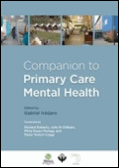SELECTED FOR YOU... OCTOBER 2012:
 books of the month
books of the month
 site of the month
site of the month
 working papers
working papers
All the Selected for you
BOOKS OF THE MONTH
Intersectoral governance for health in all policies. Structures, actions and experiences.
La gouvernance intersectorielle pour la santé dans toutes les politiques. Structures, actions et expérience.
McQueen D.V. / éd., Wismar M. / éd., Lin V. / éd. et al.
Copenhague : OMS Bureau régional de l'Europe : 2012 : xix + 206 p.
Un grand nombre de politiques et de programmes influant sur la santé proviennent en fait d'autres secteurs que celui de la santé. Les pouvoirs publics doivent par conséquent, en s'occupant de la santé des populations, faire usage d'une stratégie ou d'un principe politique favorisant l'action intersectorielle. La santé dans toutes les politiques réalise cet objectif, en encourageant les approches intersectorielles en matière de gestion, de coordination et d'action. Cette publication illustre la recherche sur le mode de fonctionnement des structures de gouvernance intersectorielles, en montrant : comment les pouvoirs publics et les ministères peuvent engager une action, et comment les structures de gouvernance intersectorielles peuvent être établies, utilisées et maintenues avec succès. Elle présente des exemples accessibles et pertinents d'outils et d'instruments de gouvernance disponibles pour les responsables politiques, ainsi que plus de 20 mini-études de cas en provenance d'Europe, des Amériques, d'Asie et d'Australie sur la façon dont les pays ont actuellement recours à la gouvernance intersectorielle pour intégrer la santé dans toutes les politiques. Elle définit également plusieurs grandes structures intersectorielles, et leur manière de faciliter l'action intersectorielle : commissions et secrétariats ministériels, commissions parlementaires, commissions et unités interministérielles, super-ministères et regroupements de ministères ,budgétisation conjointe financement délégué, et participation du public, des parties prenantes et du secteur privé (4e de couverture) .
Economic fables.
Fables économiques.
Rubinstein A.
Cambridge : OpenBook Publishers : : 253 p.
Part memoir, part crash-course in economic theory, this deeply engaging book by one of the world's foremost economists looks at economic ideas through a personal lens. Together with an introduction to some of the central concepts in modern economic thought, Ariel Rubinstein offers some powerful and entertaining reflections on his childhood, family and career. In doing so, he challenges many of the central tenets of game theory, and sheds light on the role economics can play in society at large. The book is as thought-provoking for seasoned economists as it is enlightening for newcomers to the field (4e de couverture).
Ageing, health and productivity : the economics of increased life expectancy.
Vieillissement, santé et productivité : l'économie de l'augmentation de l'espérance de vie.
Dormont B., Borsh-Supan A., Galasso V. et al., Garibaldi P. / éd., Oliveira Martins J. / éd., Van Ours J. / éd.
Oxford : Oxford University Press : 2012 : 14 p. + 263 p.
Increase in life expectancy is arguably the most remarkable by-product of modern economic growth. In the last 30 years we have gained roughly 2.5 years of longevity every decade, both in Europe and the United States. Successfully managing aging and longevity over the next twenty years is one of the major structural challenges faced by policy makers in advanced economies, particularly in health spending, social security administration, and labor market institutions. This book looks closely into those challenges and identifies the fundamental issues at both the macroeconomic and microeconomic level. The first half of the book studies the macroeconomic relationships between health spending, technological progress in medical related sectors, economic growth, and welfare state reforms. In the popular press, longevity and population ageing are typically perceived as a tremendous burden. However, with a proper set of reforms, advanced economies have the option of transforming the enormous challenge posed by longevity into a long term opportunity to boost aggregate outcomes. The basic prerequisite of a healthy ageing scenario is a substantial structural reform in social security and in labor market institutions. The second part of the book looks closely into the microeconomic relationship between population aging and productivity, both at the individual and at the firm level. There is surprisingly little research on such key questions. The book contributes to this debate in two ways. It presents a detailed analysis of the determinants of productivity, with a focus on both the long-run historical evolution and the cross sectional changes. It also uses econometric analysis to look into the determinants of the various dimensions of individual productivity. The volume concludes that the complex relationship between population ageing and longevity is not written in stone, and can be modified by properly designed choices (4e de couverture).
Companion to primary care mental health.
Le compagnon des soins primaires en santé mentale.
Ivbijaro G. / éd.
Londres : Radcliffe Publishing : 2012 : 30 p. + 375 p.
Companion to Primary Care Mental Health is the result of a major collaboration of an international group of general practitioners, psychiatrists, policy-makers, mental health professionals and mental health advocates. This extraordinary guide provides the best available evidence for the management of patients with mental health conditions in primary care. It draws on the wisdom of a range of experts from primary and secondary care, who have translated information from the literature and their own clinical experience to apply it across the globe to everyday family practice. With the emphasis on practical application it presents family doctors and their teams with the evidence-based knowledge necessary to support the development of fully integrated systems to promote good mental health using tables and figures to illustrate complex matters. This includes the need to harness the wider determinants of health and mental health and to tackle stigma through advocacy, spirituality and ethical practice. The role of public health and the management of the many interfaces associated with providing good mental health are also covered. It includes tools for assessment, including classification and risk assessment, and the general principles required to enable a biopsychosocial approach to care. The book also considers the individual mental health conditions that family doctors and their teams are likely to encounter. As comorbidity and the management of complexity are very common in primary care mental health, these are also explored in the final chapters of the book (4e de couverture).
SITES OF THE MONTH
Greynet
www.greynet.org
Opengrey
www.opengrey.eu/search
WORKING PAPERS
Health Care Inequalities
Income, Poverty, and Health Insurance Coverage in the United States. 

Denavas-Walt C., Proctor B.D., Smith J.C. (2012)
Washington : US Printing Office
The U.S. Census Bureau announced today that in 2010, median household income declined, the poverty rate increased and the percentage without health insurance coverage was not statistically different from the previous year. Real median household income in the United States in 2010 was $49,445, a 2.3 percent decline from the 2009 median. The nation's official poverty rate in 2010 was 15.1 percent, up from 14.3 percent in 2009 - the third consecutive annual increase in the poverty rate. There were 46.2 million people in poverty in 2010, up from 43.6 million in 2009 - the fourth consecutive annual increase and the largest number in the 52 years for which poverty estimates have been published. The number of people without health insurance coverage rose from 49.0 million in 2009 to 49.9 million in 2010, while the percentage without coverage -16.3 percent - was not statistically different from the rate in 2009. This information covers the first full calendar year after the December 2007-June 2009 recession. See section on the historical impact of recession- s. These findings are contained in the report Income, Poverty, and Health Insurance Coverage in the United States: 2010. The following results for the nation were compiled from information collected in the 2011 Current Population Survey (CPS) Annual Social and Economic Supplement (ASEC).
Health Economics
Growth and Welfare Effects of Health Care in Knowledge Based Economies. 

Kuhn M., Prettner K. (2012)
Vienne : Institut de démographie
We consider an endogenous growth model with Blanchard-Yaari-type overlappin- g generations that is built around four sectors: final and intermediate goods production, an R&D sector and a health care sector. Health care serves to lower mortality and morbidity, the latter being related to participation/productivity in the labor market. We show that, regardless of its finance, the impact of health care on economic growth crucially depends on whether or not it increases employment in the R&D sector. Even if an increasing health care sector reduces the (effective) labor available for production and R&D, it may still fuel R&D employment and economic growth if the increase in aggregate wealth that comes with expanding longevity raises the capital intensity in the final goods sector to an extent that labor shifts to alternative employment in R&D. While numerical assessment indicates that the health sectors of th e Euro area economies are too large from a growth perspective, we can establish mild conditions under which an expansion of health care beyond the growth-maximizing level constitutes a Pareto-improvement.
Hospital
Potentially avoidable hospitalisations in Australia : causes for hospitalisations and primary health care interventions. 

Katteri R., Anikeeva O., Butler C., Brown L.e.A. (2012)
Australia : causes for hospitalisations and primary health care interventions. PHC RIS.
Ce rapport se concentre sur la réduction des hospitalisations potentiellement évitables chez les patients atteints de maladie chronique courante comme le diabète, la MPOC et les problèmes dentaires. Le rapport cible des programmes prometteurs pour réduire ces hospitalisations, mais note que les réductions ne sont pas nécessairement associées à de meilleurs résultats cliniques.
Hospital market concentration and discrimination of patients. 

Dewenter R., Jaschinski T., Kuchinke B.A. (2012)
Düsseldorf : Düsseldorf Institute for Competition Economics.
This paper investigates the existence of a two-tier medical system in the German acute care hospital sector using data from a survey of 483 German hospitals. The focus of the analysis lies on the impact of hospital concentration on the probability of discrimination of patients with different health insurances in regard to the access to medical services. Accounting for a possible endogeneity of market structure, it finds that hospitals in highly concentrated markets are less likely to pursue any differentiation among prospective patients with different health insurances. It ascribes this finding to competitive pressure in less concentrated markets. Hospitals in competitive markets are more obliged to steal business from rival hospitals by privileging profitable patients than hospitals in highly concentrated markets.
Mandatory Quality Disclosure and Quality Supply: Evidence from German Hospitals. 

Filistrucchi L., Ozbugday F.C. (2012)
Firenze : Università degli Studi di Firenze.
Using a newly constructed dataset on German hospitals, which includes 24 process and outcome indicators of clinical quality, we test whether quality has increased in various clinical areas since the introduction of mandatory quality reports and the online publication of part of the collected quality measures. Our results suggest that process indicators of clinical quality have increased significantly in 2008 compared to 2006. In addition, the hospitals underperforming in 2006 appear to have increased their clinical quality relatively more than the other hospitals. When instead quality is measured by outcome indicators, average clinical quality is estimated to have increased for underperforming hospitals and decreased for the best performing hospitals in 2006, so that on average across all hospitals the changes in outcome indicators are insignificant for just more than half of the outcome quality measures. We further show that the best performing hospitals in 2006 in terms of outcome quality measures experienced an increase in their share of patients in 2008, thus providing indirect evidence that patients react to disclosed quality. Interestingly, the best performing hospitals in 2006 in terms of process quality measures did not experience a significa- nt change in their share of patients in 2008, thus suggesting that patients react more to output than to process measures of quality. Finally, for the subset of hospitals who offer services in obstetrics, we find that higher competitive pressure, measured as the number of competitors in a given radius, is associated with a higher increase in quality following quality disclosure. We argue that the latter effect is unlikely to be due to selection of patients by hospitals.
Hospitals on the edge? The time for action. 

A report by the Royal College of Physicians (2012)
Londres : Royal College of Physicians
This report argues that demand on clinical services is increasing to the point where acute care cannot keep pace in its current form. It highlights that there are a third fewer general and acute beds now than there were 25 years ago, yet the last decade alone has seen a 37% increase in emergency admissions. It makes recommendations for a move towards more patient-centred care and a reorganisation and redesign of services.
Drugs
The impact of cost sharing schemes on drug compliance: evidence based on quantile regression. 

Atella V., Kopinska J. (2012).
Tor Vergata : University of Roma, Centre for Economic and International Studies.
This work investigates the causal impact of cost sharing schemes on drug compliance using a Difference-in-Differences approach within a quantile regression framework. It exploits a series of natural experiments occurred in Italy between 2000 and 2010, referring to the introduction of regional co-payment schemes. It finds that co-payments have a negative impact on compliance, causing a reallocation of individuals from the upper to the lower tail of the compliance distribution, thus hurting the already narrow group of good compliers. The empirical evidence suggests also that gender, clinical history and geographic residence are important drivers of compliance, particularly within the group of poor compliers.
Health Care Policy - Health Care System
Intersectoral governance for health in all policies. Structures, actions and experiences. 

Sous la direction de McQueen D.V., Wismar M., Lin V., Jones C.M. et Davies M. (2012)
Copenhague : OMS Bureau régional de l'Europe
Un grand nombre de politiques et de programmes influant sur la santé proviennent en fait d'autres secteurs que celui de la santé. Les pouvoirs publics doivent par conséquent, en s'occupant de la santé des populations, faire usage d'une stratégie ou d'un principe politique favorisant l'action intersectorielle. La santé dans toutes les politiques réalise cet objectif, en encourageant les approches intersectorielles en matière de gestion, de coordination et d'action. Cette publication illustre la recherche sur le mode de fonctionnement des structures de gouvernance intersectorielles, en montrant : comment les pouvoirs publics et les ministères peuvent engager une action, et comment les structures de gouvernance intersectoriel- les peuvent être établies, utilisées et maintenues avec succès. Elle présente des exemples accessibles et pertinents d'outils et d'instruments de gouvernance disponibles pour les responsables politiques, ainsi que plus de 20 mini-études de cas en provenance d'Europe, des Amériques, d'Asie et d'Australie sur la façon dont les pays ont actuellement recours à la gouvernance intersectorielle pour intégrer la santé dans toutes les politiques. Elle définit également plusieurs grandes structures intersectorielles, et leur manière de faciliter l'action intersectorielle : commissions et secrétariats ministériels, commissions parlementaires, commissions et unités interministérielles, super-ministères et regroupement- s de ministères ,budgétisation conjointe financement délégué, et participation du public, des parties prenantes et du secteur privé.
Primary Health Care
Right data, right payment: annual report on the Payment by Results (PbR) data assurance programme 2011/12. 

(2012)
Londres : Audit Commission
This report presents the key findings from the 2011/12 programme, which includes reviews of commissioner arrangements to secure good data quality on the information that underpins PbR, audits of inpatient clinical coding and the key data set that supports payment under PbR at acute NHS trusts and foundation trusts, and following up on recommendations made in previous audits to see how well NHS trusts and foundation trusts have delivered.
Work and Health
Firm Insurance and Sickness Absence of Employees. 

Westergard-Nielsen N.C., Pertold F. (2012)
Bonn : IZA.
This study investigates the effect of firms' participation in an insurance scheme on the long-term sickness absence of their employees, using administrative records. In Denmark and several other European countries, firms are obliged to cover the first two weeks of sickness. The insurance scheme is provided by government authority and is designed to help small firms with the financial burden related to sickness absence of their workers. The authors use an exogenously-set threshold for the eligibility as a policy experiment. Using regression discontinuity in the fuzzy form, we show that sickness absence in insured firms is much more prevalent than in uninsured firms. Sickness spells in insured firms are shorter and the conditional probability to return back to work from sickness is much higher in insured firms. These results suggest that employees in insured firms are less monitored during the first two weeks and that their sickness is less serious. We demonstrate in the paper that the minimum! cost of the present insurance scheme is similar to about 1100 man-years. On top of that comes a substantial cost to more short time sickness.
Ageing
Health and Wealth in Early Retirement. 

Wallace G.L., Haveman R., Holden K., Wolfe B. (2012).
Camberra : Australian National University.
Retirement years are a precarious time for many older Americans. Even if successful in accumulating resources expected to be sufficient to maintain their pre-retirement standard of living, many retirees face unexpected adverse health shocks after retirement. Because of the uncertain- ty of shocks to physical and cognitive health, there exists the potential for significant deterioration in resource adequacy both at the time of retirement and into the retirement years due to their occurrence. In this study, we select a sample of new retirees constructed from the Health and Retirement Study (HRS) data and follow them during the first decade of their retirement. Using these data, we identify the nature of shocks to physical and cognitive health for which individuals are at risk during their retirement years, and estimate both the absolute and relative risk of these shocks. We then estimate the impact of the occurrence of these shocks on wealth-based measures of retirement adequacy.
Recessions, Older Workers, and Longevity: How Long Are Recessions Good For Your Health? 

Coile C., Levine P.B., Mc K.R. (2012).
Cambridge : NBER
This paper examines the impact of exposure to higher unemployment rates in the pre-retirement years on subsequent mortality. Although past research has found that recessions reduce contemporaneous mortality, these short-term effects may reverse over time, particularly for older workers. If workers experience an economic downturn in their late 50s, they may face several years of reduced employment and earnings before “retiring” when they reach Social Security eligibility at age 62. They also may experience lost health insurance, and therefore higher financial barriers to health care, through age 65, when Medicare becomes available. All of these experiences could contribute to weaker long-term health outcomes. To examine these hypotheses, we use Vital Statistics mortality data between 1969 and 2008 to generate age-specific cohort survival probabilities at older ages. We then link these survival probabilities to labor market conditions at earlier ages. We also use data from the 1980-2010 March Current Population Surveys and the 1991-2010 Behavioral Risk Factor Surveillance System surveys to explore potential mechanisms for this health effect. Our results indicate that experiencing a recession in one's late 50s leads to a reduction in longevity. We also find that this exposure leads to several years of reduced employment, health insurance coverage, and health care utilization which may contribute to the lower long-term likelihood of survival.
Integrating care for seniors living at home. 

Mac Leod K.K. (2012).
Options Politiques, 33 (7) : 58-62.
Cet article examine comment des soins intégrés – y compris les services sociaux et les soins de santé – permettent de répondre aux défis suscités par les besoins grandissants des personnes âgées pour des soins à domicile et des services communautaires. L'auteure propose de privilégier cette intégration en tant que méthode économique d'assurer un accès coordonné à des soins de haute qualité, tout en évaluant leur efficacité à la lumière d'une analyse comparative entre les sexes.
Care regimes on the move. Comparing home care for dependent older people in Belgium, England, Germany and Italy. 

(2012).
Charleroi : Université Catholique de Louvain.
The objective of this research is to study the responses of European states to the need for home care, starting from the reforms they have undertaken in this field over the past two decades. It also aims to identify the patterns of evolution of contemporary regimes of care in the light of these recent changes and, more specifically, in the context of growing marketisation. Our general hypothesis is that the trend of marketisation has had a differentiated impact on national care regimes.
The Impact of Social Activities on Cognitive Ageing: Evidence from Eleven European Countries. 

Christelisa D., Bobrescu L.I. (2012).
Naples : University of Naples Federico II, Centre for Studies in Economics and Finance
Using micro data from eleven European countries, we investigate the impact of being socially active on cognition in older age. Cognitive abilities are measured through scores on numeracy, fluency and recall tests. We address the endogeneity of social activities through panel data and instrumental variable methods. We find that social activities have an important positive effect on cognition, with the results varying by gender. Fluency is positively affected only in females, while numeracy only in males. Finally, recall is affected in both sexes. We also show that social activities, through their effect on cognition, influence positively households' economic welfare.





